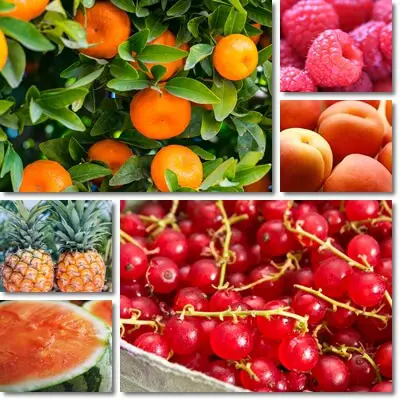The glycemic load is a chart that classifies foods based on their effects on blood sugar according to serving size. What is good about the glycemic load is that it can accurately determine to what extent a certain portion of a food can raise circulating blood sugar levels based on the amount of carbohydrates it contains. The glycemic load is a more accurate tool for blood sugar control for diabetics and non-diabetics alike because it accounts for the actual intake of foods, vs the glycemic index which provides more of a general idea on what foods to eat and what foods to avoid for blood sugar control.
What is the glycemic load?
The glycemic load is a scale that measures how much the carbohydrates in a given serving of food raise blood sugar levels. The glycemic load assigns numerical values to foods based on their impact on blood sugar levels. A food will be rated as low glycemic, moderate glycemic or high glycemic on the glycemic load chart based on its effects on blood sugar. The more carbohydrates in a serving of a food, the higher the glycemic impact and the higher the glycemic load score of the food on the glycemic load chart.

The glycemic load chart
The glycemic load chart goes from 0 to 20+. Foods with glycemic load values between 0 and 10 are rated as low on the glycemic load chart. Foods with glycemic load values starting at 11 and up to 19 are rated as medium or moderate on the glycemic load chart. Foods with glycemic load values of 20 and higher are rated as high glycemic. Diabetics looking to manage their condition and non-diabetics looking to control their blood sugar levels are advised to consume foods on the low end of the glycemic load chart. Or they can reduce food servings until the amount of carbohydrates per serving is low enough to not excite significant effects on blood sugar.
How to calculate the glycemic load?
The glycemic load formula is calculated using the glycemic index value of a food multiplied by the amount of carbohydrates per serving, divided by 100. So if you are looking to determine the glycemic load score of a food, you will need to know the glycemic index score of the food and the amount of carbohydrates per serving, which can be 50 g, 70 g, 100 g, and apply the following formula:
Glycemic load equation
The glycemic load will help you determine just how much of an effect a serving of a food will have on your blood sugar levels. That is, just how fast the carbohydrates in a serving of a food are processed by the body, meaning broken down into their simplest form, sugar, and how quickly that sugar is absorbed into the bloodstream. And because it focuses on portion size, the glycemic index also helps you determine to what extent a serving of a certain food will raise your blood sugar levels. If you adjust serving size, you can change the extent to which a food will impact your blood sugar.
Glycemic load of foods: examples
- Glycemic load of pineapple juice: 5-8 (per 100 ml), 13-18 (per cup, 240 ml)
- Glycemic load of pineapple: 9 (find out more about the glycemic load of pineapple and pineapple juice)
- Glycemic load of banana: 11-12, in some cases even 14
- Glycemic load of apple: 5-6
- Glycemic load of pomegranate seeds: 8-10
- Glycemic load of avocado: 1.2
- Glycemic load of boiled sweet potato: 9.5
- Glycemic load of raw carrots: 3.35 (for a GI of 35), 6.7 (for a GI of 70)
- Glycemic load of boiled, drained carrots: 2.8 (for a GI of 35), 5.7 (for a GI of 70)
- Glycemic load of cooked quinoa: 11 (for a GI of 53), 13.4 (for a GI of 63), 16.6 (for a GI of 78)
- Glycemic load of cooked white rice: 20.4 (determined for a GI of 73)
- Glycemic loaf of cooked brown rice: 15.2 (determined for a GI of 68)
- Glycemic load of honey: 26+ (determined for a GI of 32), 57.6 (determined for a GI of 70)
Note: Glycemic load values of the foods presented are calculated for 100 g servings, unless otherwise specified.
Note: Glycemic load values can vary significantly depending on the amount and type of carbohydrates in foods, how cooking or processing affect carbohydrate profile and their uptake and other factors.

Glycemic index vs glycemic load
What is the difference between glycemic index and glycemic load? While both tools do the same thing, that is, measure the impact of foods on circulating blood sugar, there are some differences. The glycemic index basically categorizes foods based on their glycemic impact, or degree of effects on blood sugar. Versus the glycemic load which can accurately calculate the glycemic impact of specific amounts of food. Find out more about what is the glycemic index.
Foods with a high glycemic index score can be consumed even by those who would benefit more from not eating them if they are consumed in limited amounts which makes it so that GL trumps GI. One of the most famous glycemic index vs glycemic load examples is watermelon. Watermelon has a high glycemic index score of over 70 which means it’s supposed to have a significant impact on blood sugar levels and cause spikes in blood sugar. At the same time, when it’s eaten by the portion, serving size limits carbohydrate intake and lowers its glycemic impact, hence the reason why watermelon has a low glycemic load score.
- Watermelon glycemic index: 72 to 80
- Watermelon glycemic load: 5.4-6
See my glycemic index fruits list with updated GI scores.
Glycemic load and diabetes
- Is the glycemic load important? Is the glycemic load more important than the glycemic index? Just how accurate is the glycemic load chart?
The glycemic load chart essentially helps you determine how much of an effect on blood sugar a serving of a food has. It’s fairly accurate because it makes it so that you can determine via a mathematical equation how much the amount of carbohydrates in a serving of a given food will raise your blood sugar levels. Which is important information, particularly for diabetics and anyone needing to monitor their blood sugar levels more rigorously.
At the same time, the glycemic load is not quite accurate because you calculate it based on the glycemic index. And the glycemic index of foods can vary tremendously between varieties, according to choice of cooking method, degree of ripeness and other factors. For instance, the glycemic index of honey can be as low as 30, 30+ or as high as 70, 70+ which can have the glycemic load score vary by even 30 points (for servings of 100 g). Similarly, carrots can range from low GI to high GI, while bananas can be low GI, moderate GI and high GI.
Conclusion
Ideally, both the glycemic index and the glycemic load charts should be used for determining the effects of foods on blood sugar. For example, the glycemic index can give you a general idea of what foods you should eat more of for better blood sugar control, and what foods you should try and stay away from if you’re experiencing consistently high blood sugar levels. And the glycemic load should help you calculate how much, or better said, how little of a food you should eat to enjoy good blood sugar control and avoid spikes in blood sugar levels, even if said food is best not eaten.
